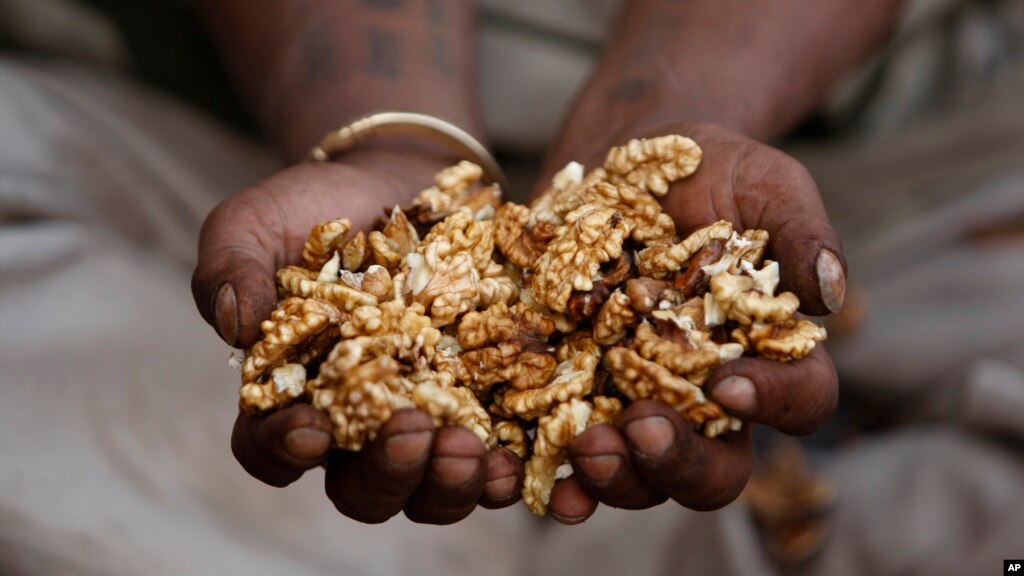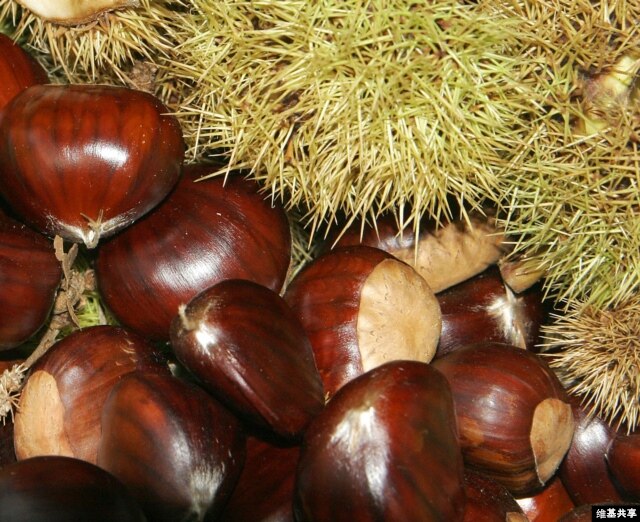
From VOA Learning English, this is the Health & Lifestyle report.
People have long known that nuts are part of a healthy diet. However, scientists in the Netherlands recently found that you do not need to eat many to get all the health benefits.
The researchers found that eating a handful of nuts or peanuts every day is linked to a lower risk of death from several major diseases.
Piet van den Brandt, a professor of epidemiology at Maastricht University, led the research. He says that eating nuts protects the health of both men and women.
“Nut intake seemed to be protective for both men and women, and that was on total mortality – any cause of death.”
Professor van den Brandt adds that you do not need as many nuts as health experts earlier suggested.
“What we found is that the beneficial effect(s) of nuts and peanuts is already apparent at a lot lower levels of intake than has been suggested before.”
About 10 grams a day is enough to get the full health benefits of nuts. That is about an average-sized handful.
Nuts are high in fat and calories. So, eating a handful before dinner can help you to eat less. But eating too many can ruin your appetite altogether.

However, the researchers found that many peanut butters did not give the same health benefits as plain peanuts. That is because most peanut butters contain added oils and sugars.
Also, when choosing which nuts to eat, avoid those stored or roasted in oil. Dry-roasted is better but still the high temperatures can kill the healthy nutrients. Nuts are most healthy if you eat them raw.
Not all nuts are created equal
Nuts differ in their fat and nutrient content.
Almonds are among the least fatty nuts. Almonds also have calcium and are high in Vitamin E. Vitamin E helps to protect the body from disease. And it’s good for skin and eyes.

Chestnuts are the nut with the least fat and fewest calories. Chestnuts are rich in carbohydrates and fiber. And in their raw form, chestnuts are a good source of vitamin C. Roasted chestnuts are a popular treat in the winter.
If you do not eat meat, cashews are a good substitute. Cashews have lots of protein and minerals, like iron and zinc. They also have the mineral magnesium, which may help to improve memory.
Walnuts are loaded with antioxidants, compounds that may help protect against cancer. They are also loaded with heart-friendly fats and omega-3s. So, walnuts are a good choice for people who do not eat fish.

Pecans are good if you want to feel less tired and pistachios can help balance your hormone levels.
And that’s the Health & Lifestyle report.
I’m Anna Matteo.
Which are your favorite nuts? And how do you use them in recipes. Let us know in the comments section.
Words in This Story
epidemiology – n. (medical): the study of how disease spreads and can be controlled
mortality – n. the number of deaths that occur in a particular time or place
appetite – n. a physical desire for food
nutrient– n. a substance that plants, animals, and people need to live and grow
omega-3 – n. (science) essential fatty acids that are found in fish, green leafy vegetables and some nuts and vegetable oils
substitute – n. a person or thing that takes the place of someone or something else
